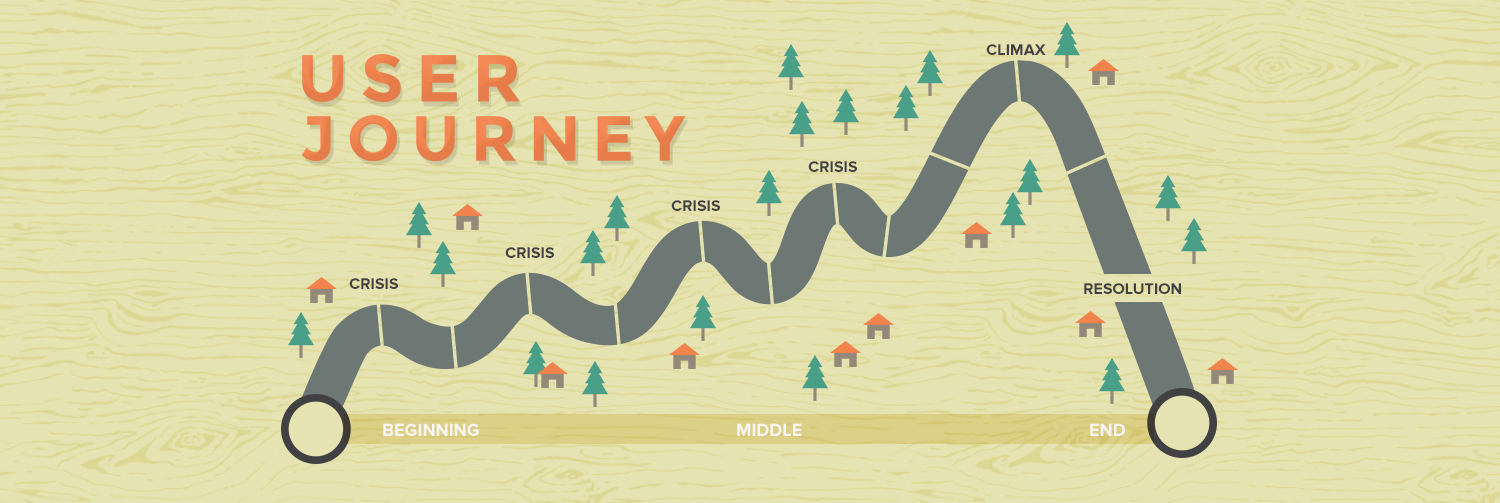
Donna Lichaw’s new book focuses on the art of storytelling for user journeys, which can help organizations and content creators across the board achieve their content goals. She illustrates how making your users the heroes can make any product more successful. Lichaw pulls inspiration from her previous experience as a filmmaker to serve as a ‘story first’ consultant, speaker, and educator.
Content Science chatted with Lichaw about the inspiration for her book, key steps in storymapping, and much more.
What specifically inspired the idea for your new book?
I always said I would never get married and never write a book and did both in the same year! Basically a series of aha moments happened around the same time. I was working at a startup by day that was about to go out of business because they were having a hard time acquiring customers. At the same time, I was teaching at night with more in-person hours than any class I’d taught before, and I started getting anxious about how to engage my students for a really long semester. To create my PowerPoints, I focused on story arcs like I would if I was making films. I was doing all non-fiction anyways, and it was working so well, I thought, “Why wouldn’t the startup use the same mechanics as story arcs? Could the story be what this startup was missing throughout the key user flows?”
So, just like I did for my students and films, I started mapping out all the scenarios of users, and what I found very quickly was that the startup was missing a story at many different levels. I ran into the CEO’s office and said, “We need a story for this product!” Of course, he got very upset with me and told me to leave his office [laughs]. Never go to the executive and say, “We don’t have a story.”
What I ended up doing, and what I do now, is first speak with existing customers. I wanted to know why they were using it on a daily basis. My filmmaking background came into play—aka user research—and I started piecing together why regular users loved the product. Then I could bring the executives a story about why people loved the business and how we could build these success stories into the product so more people would love it, too. The users who loved it, they had to work really hard to make these stories happen. If more people can see what they can do with the product, that’s what we started building in, from home page to advertising to user journeys to checkout flows. It’s content engineering.
What’s your approach when working with a new organization?
When doing this kind of work, there are two ways to approach storymapping:
- Talk to existing customers.
- If you don’t have the time to talk to customers or any customers yet, map out stories as hypotheses and think about what these stories could be.
I always like to start with the blue skies, happy path story and think about the ultimate customers who will use it all the time and love it. Trust me, it’s A LOT easier to go to the CEO with a really positive story!
Can you walk us through the steps you recommend when storymapping?
- Understand who the main character(s) is either through using personas or specifics.
Who’s the hero? If the organization already knows, we will use that. If they don’t, we will go find out who the hero is. If there’s no budget or no time to talk to existing customers, then we can base it off of hypotheses.
- Identify what the character’s goals are as it relates to your product/service.
Once you have those two things, it’s a matter of asking a question. Stephen King says, “A story is a question, answered. What if vampires invaded a small town in New England?” So, I think that when mapping stories for developing products and services and concepts and flows, you have to know what your question is. How might people make their purchase so that they’ll feel great that they engaged with us? Or, why are people going to our home page and not clicking through the first page past the signup button? Or, why would someone use our app? The question(s) can be very, very high level or more detailed.
- Map out stories to answer.
You can base these on either real data or a hypothesis. If the question is, why are only 5% of users getting to the end of our signup flow? Maybe the answer is that 10 steps takes too long or the language is unclear.
If you go to your analytics flow, you can reverse engineer it to look for actual cliffhangers in your data as you watch people engage with a particular part of your product’s story and pinpoint where they’re dropping off the cliff. Or, if you’re designing something from scratch, approach it as a creative endeavor. I like getting everyone in the team together and have a sketching session thinking about plot points.
- Test it.
Make sure whatever your new story is that you’re correct. Test it in person, test it online, and gather new analytics so you can tweak the story as needed.
What was one of your biggest takeaways while doing research for and writing your book?
One of the hardest things for executives to get over is this concept that “we need to tell our brand story.” You don’t! I advocate flipping that and make your story user-centered, because the thing about stories is, customers don’t really care about your brand’s story; they only care about their own story and their problems. You have to show how engaging with your product will help them feel a victory in their own life. You need to show people how they will feel after, what they can do with your product, and how their life will be better afterward.
Now, if you’re company has a story that resonates with the user’s story, by all means, share it. In Silicon Valley, for example, startups are obsessed with their origin story, i.e., we were two men with $20 to our name tinkering in a garage and then we made this innovative product that saved the world. That can work if your brand is about innovation and your customers want to feel smart after using your product, but it’s because the user’s story resonates, not the brand’s. In this case, the product or service has to continue to make them feel really smart and supported afterward, too. Leaders must keep in mind that the customer is the superhero and your job is to tell them how your product will help them become a hero.
Speaking of origin stories, one of your chapters focuses on this topic. We see more and more companies promoting these (i.e., the Dodge Brothers and Wells Fargo’s stagecoach commercials). Do you think most companies/organizations should share their origin stories?
I do think that there is storytelling versus storymaking, and I advocate for storymaking. You want to set things up for your customers so that when they interact or experience your brand or service, they are experiencing it like a story with all the plot points, whether it’s in a split second or over many years. You want to foster the experience to be as much like a story as possible. If telling your origin story is one way to enable a great experience for your customers, then tell it. Storytelling can be really helpful, but the most important thing is that people experience that story themselves.
For example, if Wells Fargo is confident that security is the most important thing to their customers, they need to talk about security constantly and reassure their users that their money is safe. If someone is signing up for a Wells Fargo account for the very first time and they don’t feel safe or it looks like buttons are designed by someone in high school, there’s discord there and you are no longer supporting the storymaking about security. Storymapping is really about crafting all the things that will help your customers feel awesome. If a TV spot will help get people to the next step in the journey, then do it.
What’s one of the most unique ways you’ve used storymapping?
I storymapped my wedding! It’s still something that people say was their favorite wedding. Part of it was using storymapping to figure out what order to do things and how to plan out the day. We wanted people to experience things at the right point, and I think we did a good job since people still talk about it years later. It’s fun to engineer stories about everyday things, whether you’re doing an interview, event, or cover letter—map out the stories!
Our readers can enjoy 20% off with discount code USERJULY for The User’s Journey: Storymapping Products that People Love (and all RosenfeldMedia.com products) through Aug. 2.







Comments
Comments are closed.
We invite you to share your perspective in a constructive way. To comment, please sign in or register. Our moderating team will review all comments and may edit them for clarity. Our team also may delete comments that are off-topic or disrespectful. All postings become the property of
Content Science Review.